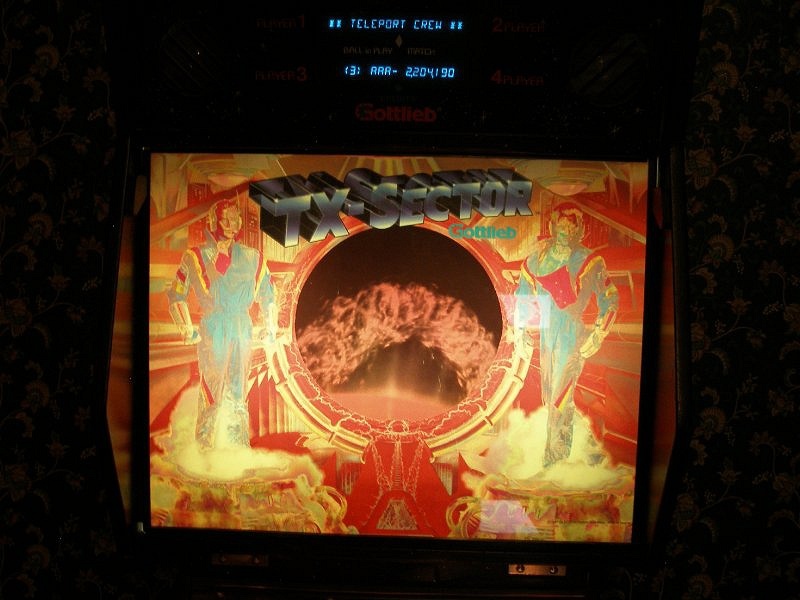

TX-Sector
We see three different playfields for this game, easily noticed by the brightness of the two trapezoids located between the slingshots on the lower playfield: 1) A Vitrigraph laminated playfield, such as the one in the flyer. Of the three versions, the trapezoids here are the lightest in color. The word "Vitrigraph" appears near the outhole. 2) A silkscreened playfield with lighter trapezoids. 3) A silkscreened playfield with darker trapezoids. We asked John Trudeau if he might recall the reason for these different "versions". He replies:I am not sure, but I believe Premier cut off the "Vitrigraph" process in the middle of the production run due to problems in the field. I think the stoppage was done in either TX Sector or Diamond Lady. I can't remember which. That would explain the differences in the colors, I believe. Other than that, I am not aware of any production color changes that were made. There may have been a hiccup in the production of the [silkscreened] playfields. I am sure there was never a conscious effort to change the art once it was in production (that would only have incurred more cost). There could have been a screen that needed to be repaired at some point in production. And, I don't think there were any actual changes in the vendors doing the screening. John later confirmed to us that TX Sector, Premier's 1988 'Diamond Lady', and Premier's 1987 'Victory' were the only games to have Vitrigraph playfields, a process he believes was solely developed by Premier and not used by other pinball manufacturers.






































